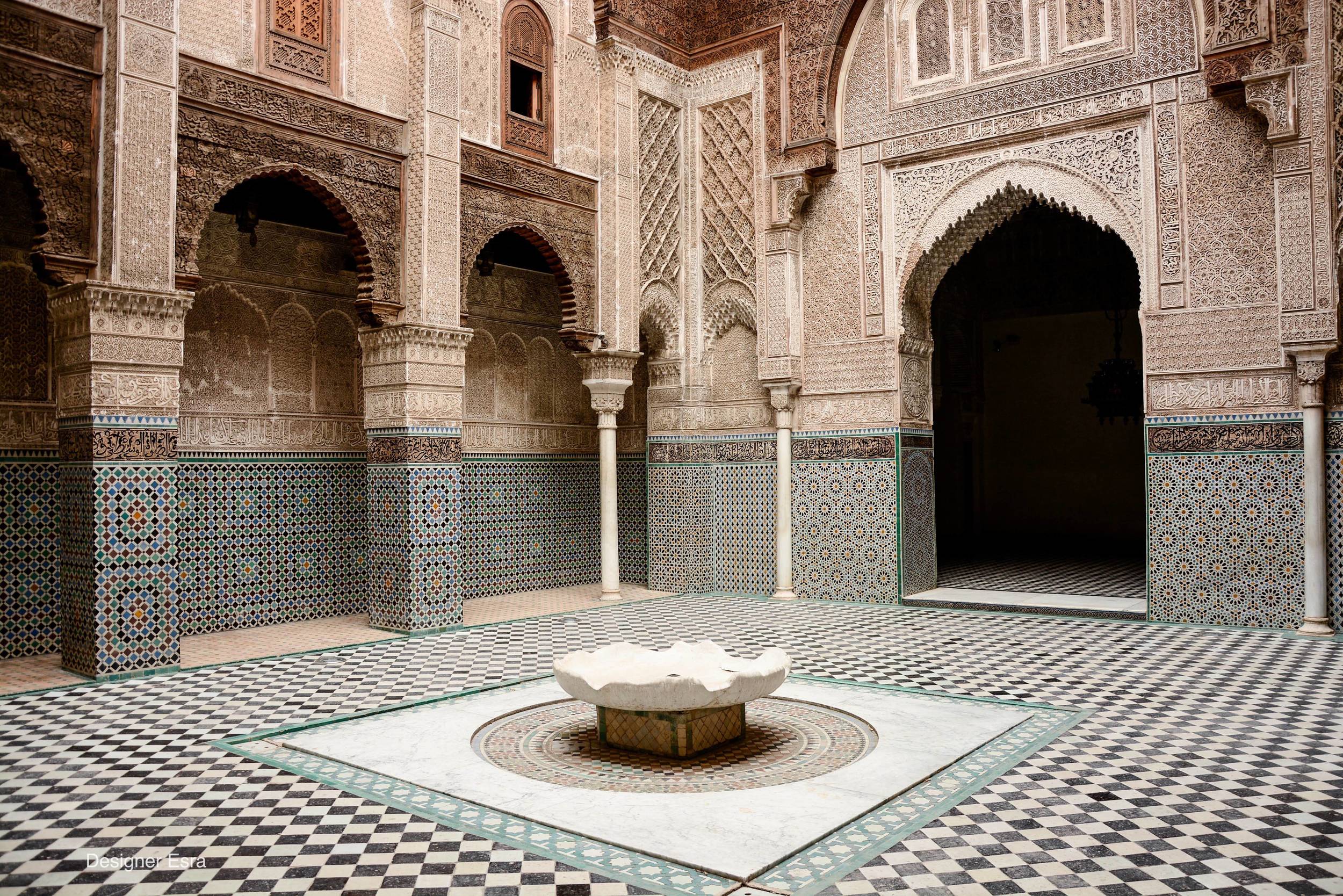I turned around sharply to the unexpected loud banging noise and saw few elderly men and their apprentices hammering away at copper plates, shaping them and turning the flat material into beautiful useable kitchenware. After all, I was standing at the “workers of yellow/Saffarin” Square. The name should have given it away, but I thought it was only symbolic. It turns out that each square's name in the old medina of Fes is named after the type of workers who reside there.
I followed the tour guide of the Artisanal Fes tour eagerly as we got closer to the copper workers. We were given a quick introduction of how the copper shaping is done. The workers of yellow were not only the ones who worked with copper, but the ones who worked with brass as well. The brass crafter was working on a really big chandelier. The shaping was done in similar format to the copper, but it had more precise tools. The little shop had brass rings, earrings and little key chains. The prices were exact without the usual inflated tourists price tag. I think that was the most honest crafter in Fes.
Next stop was the knives sharpener who welcomed us with his brightly coloured clothes that matched his shop front. He was one of the oldest workers, but full of life sharpening one knife after another with his old stone machine while chatting, balancing the sharpening and the eye contact perfectly.
We continued the walking until we reached the “workers of combs/ Mashateen” Square, where we stopped by the combs maker shop. He had combs and key chains made out of discarded animal bones. The shapes of his combs and key chains were unusual and everyone in the group instantly wanted one. He was a stubborn man who did not lower the price one bit. He told me in Arabic in a soft shivering voice that he is worthy of every penny and pointed at some various scars in his hands and feet. After he said that I handed him the money happily without any more discussion. I even believed him until he did a miraculous jump to show us how he closes his shop. I guess the scars were not as painful as he made me believe. He was a great entertainer though.
From there we moved further into the small, crowded weavers space. There were a couple of weavers at work making bright scarves. The tour guide told us about the weaving process and to make the experience fun they gave the girls and the boys of the tour a quick turban tutorial that added to the atmosphere.
The last stop of the tour was the tanneries. Before we even got there we were embraced with the most appalling smell of dead animals and it only got worse the closer we got. I was very thankful for my headscarf because I instantly wrapped it over my nose to block the smell. The torture of the smell was mildly solved by fresh branches of mint that we were giving upon entering the leather exhibition, where we went to the top floor to see the tanneries. It was interesting to look at the process, but it turned into a leather shopping spree after the tour was over.
The tour was very pleasant and picturesque. There is something beautiful about capturing crafters at work. I was most comfortable taking photos during the Culture Vultures of Fez tours and workshops because everyone that we met has had previously agreed to photos. I highly recommend it.
















































